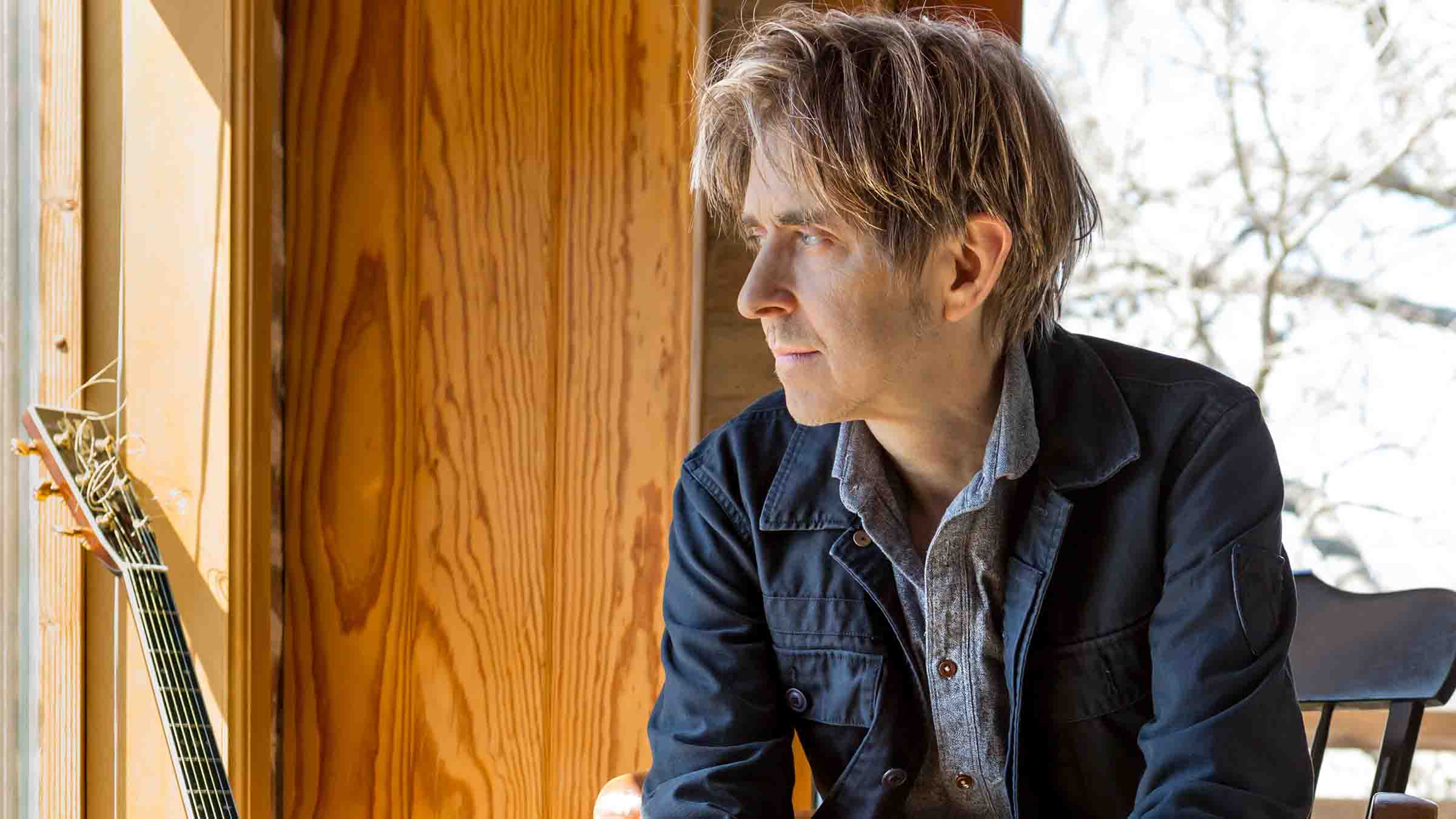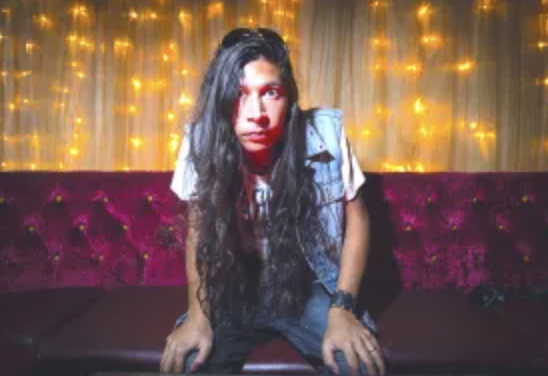Eric Johnson's top 5 tips for guitarists
Guitar luminary sheds light on pick technique and 'wrong' notes

EJ
Eric Johnson has long embodied the notion of a guitarist’s guitarist. He may not be as well-known as other heroes in the six-string hall of fame, but the Grammy-winning Texan’s staggering command over whatever instrument he plays and ability to perfectly place it within the sonic spectrum has led to wide-eyed admiration the world over.
It’s the kind of musicianship that can only come with an incredibly learned and disciplined approach to scales and theory, understanding the relationship between each interval across the entire neck as well the technicalities behind blistering alternate and hybrid picking.
This year’s album EJ sees Johnson pushing himself even further, with no electric instruments whatsoever, the majority of which were recorded unaccompanied in his home studio…
“It’s something I’ve wanted to do for a number of years but never got round to doing,” admits the singer-songwriter.
“I was always busy doing electric records or touring or whatever, but the acoustic stuff is something I’ve always done at home. And it’s a huge part of me, it’s very personal. So in the end, I decided to do this properly to represent another side of me.”
Though to the rest of us it seems like little could faze such a well-rounded musician, Johnson cites the challenge in not having the safety blanket of electric instruments as a driving factor behind the recordings.
For nine of the songs, there’s no band - just a piano or acoustic accompanied by voice - showcasing perhaps most up-close and personal side of the Texan we’ve heard yet.
“I had to go in and perform this stuff, rather than piece it together,” he continues.
I definitely had my homework cut out and it was a very different challenge for me...
“I wanted it to be more honest and straightforward, which forced me to figure out ways to make the orchestration work with just one solo acoustic guitar. And then practise the song until I was able to play it perfectly the whole way through, as I chose to record live. So I definitely had my homework cut out and it was a very different challenge for me...”
“I used brush strums in certain places and different chord voices to give it certain flavours in places. It was just a process of me trying to learn more about music: listening to records I like, working with guys like Mike Stern - absorbing more into my vocabulary, I guess.”
The album includes a cover of one of Jimi Hendrix’s lesser-known cuts, One Rainy Wish, which Johnson had performed live on the various Experience Hendrix tours he’s been involved in across the years.
Recording a new version, however, meant breathing new life into it in some way, eventually reimagining the piece as a haunting folk-jazz odyssey…
“It’s a song that I’ve always loved,” smiles Johnson.
“I just think it’s a really beautiful piece, as a lot of Jimi’s music was. I had performed it live on electric a few times just as it is on the original record, but I figured it would be really neat to look at it differently.
“A great song can be interpreted a whole number of ways and it sure was a fun experience showing just how wonderful I think that song is.”
Here, Eric Johnson shares his top five tips for guitarists…
EJ is out on 7 October via Provogue/Mascot Label Group.
Don't Miss

1. Think about how you attack the string
“The way you do this is very important. When I play with a pick, I’m careful to brush the string in a way that gets the most tonality out of it and least amount of noise. If I’m using my fingers, I try to do the same thing. It’s a case of figuring out which part of your fingers gets the best tone, you have to practice and find that sweet spot.
“And then muting is a technique in itself. You want to be able to mute with the left hand and right hand, wherever you’re not playing should be muted.
[A different pick] can make you think you’re playing a totally different amp!
“A lot of your tones comes from even the type of pick you use. It’s really interesting; you can get 10 picks from a music store, and if you’re using enough distortion, each one will sound totally different. It can make you think you’re playing a totally different amp!
“When you think about it, the pick hitting the string is what initiates your sound. When you are using overdrive or fuzz, you have to find out where the threshold is, otherwise no matter how flawless your technique is, it can sound kinda trashy. The idea is to determine the threshold on your pedal or amp overdrive to where you can go as far as you can before the sound starts pixelating - which can make your technique sound bad.”

2. Learn different ways to pick the same lick
“One thing that really helped me is learning how to do the same runs starting with an upstroke as well as a downstroke.
“If you’re playing two-notes-per-string, that will make every note the opposite of how you played it before, and will eventually help you break free as a player that is able to do either. Look at the great bluegrass players: they can just go wild and it doesn’t matter how they start their runs.
“If you get to the point where you are free to do either, that’s when it’ll start to feel more like breathing. I’m still working on that - I still struggle. It’s a hard point to reach, but bluegrass guys like George Vincent make it look effortless. That guy just wails through his lines!
“After learning a passage, I’ll adjust my hand to play the part as well as possible… sometimes I might go for more of a picking approach, starting either way, and sometimes it might be pull-offs.”

3. Understand how to build your own chords
“When you’re playing under something, there could a lot of options out there that could be more useful in embellishing the melody. You could get a Mel Bay chordbook and just study that, or maybe look at Ted Greene’s book Chord Chemistry. The key thing is to understand your inversions: any chord you can play, you can invert.
“You could put the root on the top or the third on the bottom, or instead of playing a sixth here, you could raise it an octave. It might be quite a stretch, but you have the flexibility for any voicing or inversion you want.
You can push wider than would apparently seem possible by imagining the fretboard as something that is unlimited
“When you look at a piano, you see more of an unlimited potential; when you look at a guitar, it seems smaller and more confined. The fretboard looks tiny compared to an 88-key piano, but we can decide how much we adhere to those confinements by pushing outside of them.
“If you listen to piano players, you can figure out their voicings and start to recreate it on guitar. You can push wider than would apparently seem possible by imagining the fretboard as something that is unlimited.”

4. Sit behind a piano
“Speaking of which, I think understanding the piano really helps… And you don’t have to become a great pianist; that’s not really important. A lot of people play just enough piano to write a song or figure out chord changes.
“It’s a beautiful instrument for writing and studying music - I would suggest any musicians of any instrument to undertake piano lessons. Not for the intention to become great at the instrument, but rather for perspective.
When you look at a piano, you can see every note... like laying out a long piece of paper that has all the architectural plans for a building
“When you look at a piano, you can see every note. All 88 keys… the whole spectrum. It’s like laying out a long piece of paper that has all the architectural plans for a building. It’s a great centre-point and home base to look at and study music.
“You can then transfer that perspective to any instrument. I don’t think too much about practising scales any more; I don’t approach things theoretically. It’s more like I’ve taught my ear to know the scales and that’s what I go with. If I hear a melody I like, then I’ll work it out.”

5. Figure out how to use the wrong notes
“Wes Montgomery once said, ‘You can play any note at any time if you play it correctly!’ And I think the point of that is some notes need to be recessive, some need to be dominant. So as long as you play it in the right way, any note can work. If it's leading to something, the wrong note can be right.
Sometimes I’ll sit there and force myself to play a bunch of wrong notes to figure out how they could be used
“Sometimes I’ll sit there and force myself to play a bunch of wrong notes to figure out how they could be used. That can then affect the chords you come up with! You have to be okay with letting yourself play wrong notes and try out something different.
“And, as with anything new, playing really slowly is very important - you should only speed things up eventually. A lot of the time, players want to jump in and be playing at top speeds immediately.
“There have been times I’ve been playing by myself, working through songs. Then I’ll get with the band and it’ll sound horrible because I didn’t work hard enough on the timing. I was too busy rushing through the parts and not in the moment enough. The best way to get technically proficient and really clean in execution is to start slow and build from there.”
Don't Miss
Amit has been writing for titles like Total Guitar, MusicRadar and Guitar World for over a decade and counts Richie Kotzen, Guthrie Govan and Jeff Beck among his primary influences. He's interviewed everyone from Ozzy Osbourne and Lemmy to Slash and Jimmy Page, and once even traded solos with a member of Slayer on a track released internationally. As a session guitarist, he's played alongside members of Judas Priest and Uriah Heep in London ensemble Metalworks, as well as handling lead guitars for legends like Glen Matlock (Sex Pistols, The Faces) and Stu Hamm (Steve Vai, Joe Satriani, G3).
